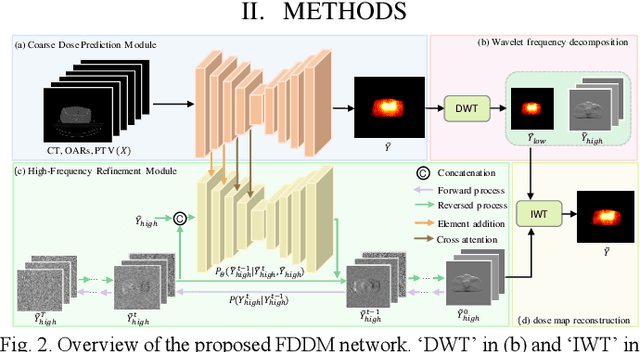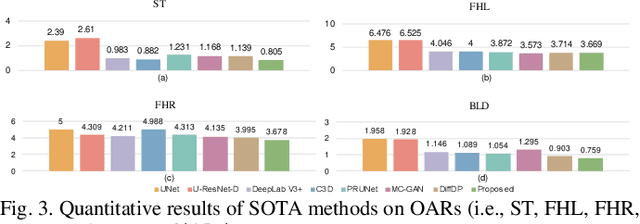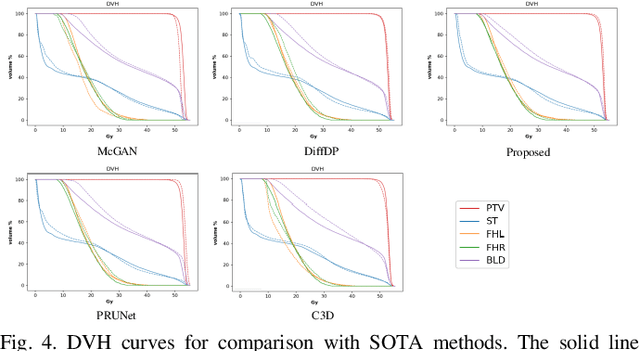Xin Liao
OpenPath: Open-Set Active Learning for Pathology Image Classification via Pre-trained Vision-Language Models
Jun 18, 2025Abstract:Pathology image classification plays a crucial role in accurate medical diagnosis and treatment planning. Training high-performance models for this task typically requires large-scale annotated datasets, which are both expensive and time-consuming to acquire. Active Learning (AL) offers a solution by iteratively selecting the most informative samples for annotation, thereby reducing the labeling effort. However, most AL methods are designed under the assumption of a closed-set scenario, where all the unannotated images belong to target classes. In real-world clinical environments, the unlabeled pool often contains a substantial amount of Out-Of-Distribution (OOD) data, leading to low efficiency of annotation in traditional AL methods. Furthermore, most existing AL methods start with random selection in the first query round, leading to a significant waste of labeling costs in open-set scenarios. To address these challenges, we propose OpenPath, a novel open-set active learning approach for pathological image classification leveraging a pre-trained Vision-Language Model (VLM). In the first query, we propose task-specific prompts that combine target and relevant non-target class prompts to effectively select In-Distribution (ID) and informative samples from the unlabeled pool. In subsequent queries, Diverse Informative ID Sampling (DIS) that includes Prototype-based ID candidate Selection (PIS) and Entropy-Guided Stochastic Sampling (EGSS) is proposed to ensure both purity and informativeness in a query, avoiding the selection of OOD samples. Experiments on two public pathology image datasets show that OpenPath significantly enhances the model's performance due to its high purity of selected samples, and outperforms several state-of-the-art open-set AL methods. The code is available at \href{https://github.com/HiLab-git/OpenPath}{https://github.com/HiLab-git/OpenPath}..
Sim-to-Real: An Unsupervised Noise Layer for Screen-Camera Watermarking Robustness
Apr 26, 2025Abstract:Unauthorized screen capturing and dissemination pose severe security threats such as data leakage and information theft. Several studies propose robust watermarking methods to track the copyright of Screen-Camera (SC) images, facilitating post-hoc certification against infringement. These techniques typically employ heuristic mathematical modeling or supervised neural network fitting as the noise layer, to enhance watermarking robustness against SC. However, both strategies cannot fundamentally achieve an effective approximation of SC noise. Mathematical simulation suffers from biased approximations due to the incomplete decomposition of the noise and the absence of interdependence among the noise components. Supervised networks require paired data to train the noise-fitting model, and it is difficult for the model to learn all the features of the noise. To address the above issues, we propose Simulation-to-Real (S2R). Specifically, an unsupervised noise layer employs unpaired data to learn the discrepancy between the modeling simulated noise distribution and the real-world SC noise distribution, rather than directly learning the mapping from sharp images to real-world images. Learning this transformation from simulation to reality is inherently simpler, as it primarily involves bridging the gap in noise distributions, instead of the complex task of reconstructing fine-grained image details. Extensive experimental results validate the efficacy of the proposed method, demonstrating superior watermark robustness and generalization compared to those of state-of-the-art methods.
A Causal Convolutional Low-rank Representation Model for Imputation of Water Quality Data
Apr 21, 2025Abstract:The monitoring of water quality is a crucial part of environmental protection, and a large number of monitors are widely deployed to monitor water quality. Due to unavoidable factors such as data acquisition breakdowns, sensors and communication failures, water quality monitoring data suffers from missing values over time, resulting in High-Dimensional and Sparse (HDS) Water Quality Data (WQD). The simple and rough filling of the missing values leads to inaccurate results and affects the implementation of relevant measures. Therefore, this paper proposes a Causal convolutional Low-rank Representation (CLR) model for imputing missing WQD to improve the completeness of the WQD, which employs a two-fold idea: a) applying causal convolutional operation to consider the temporal dependence of the low-rank representation, thus incorporating temporal information to improve the imputation accuracy; and b) implementing a hyperparameters adaptation scheme to automatically adjust the best hyperparameters during model training, thereby reducing the tedious manual adjustment of hyper-parameters. Experimental studies on three real-world water quality datasets demonstrate that the proposed CLR model is superior to some of the existing state-of-the-art imputation models in terms of imputation accuracy and time cost, as well as indicating that the proposed model provides more reliable decision support for environmental monitoring.
Academic Network Representation via Prediction-Sampling Incorporated Tensor Factorization
Apr 11, 2025Abstract:Accurate representation to an academic network is of great significance to academic relationship mining like predicting scientific impact. A Latent Factorization of Tensors (LFT) model is one of the most effective models for learning the representation of a target network. However, an academic network is often High-Dimensional and Incomplete (HDI) because the relationships among numerous network entities are impossible to be fully explored, making it difficult for an LFT model to learn accurate representation of the academic network. To address this issue, this paper proposes a Prediction-sampling-based Latent Factorization of Tensors (PLFT) model with two ideas: 1) constructing a cascade LFT architecture to enhance model representation learning ability via learning academic network hierarchical features, and 2) introducing a nonlinear activation-incorporated predicting-sampling strategy to more accurately learn the network representation via generating new academic network data layer by layer. Experimental results from the three real-world academic network datasets show that the PLFT model outperforms existing models when predicting the unexplored relationships among network entities.
FDDM: Frequency-Decomposed Diffusion Model for Rectum Cancer Dose Prediction in Radiotherapy
Oct 10, 2024



Abstract:Accurate dose distribution prediction is crucial in the radiotherapy planning. Although previous methods based on convolutional neural network have shown promising performance, they have the problem of over-smoothing, leading to prediction without important high-frequency details. Recently, diffusion model has achieved great success in computer vision, which excels in generating images with more high-frequency details, yet suffers from time-consuming and extensive computational resource consumption. To alleviate these problems, we propose Frequency-Decomposed Diffusion Model (FDDM) that refines the high-frequency subbands of the dose map. To be specific, we design a Coarse Dose Prediction Module (CDPM) to first predict a coarse dose map and then utilize discrete wavelet transform to decompose the coarse dose map into a low-frequency subband and three high?frequency subbands. There is a notable difference between the coarse predicted results and ground truth in high?frequency subbands. Therefore, we design a diffusion-based module called High-Frequency Refinement Module (HFRM) that performs diffusion operation in the high?frequency components of the dose map instead of the original dose map. Extensive experiments on an in-house dataset verify the effectiveness of our approach.
An Adaptive Latent Factorization of Tensors Model for Embedding Dynamic Communication Network
Aug 29, 2024



Abstract:The Dynamic Communication Network (DCN) describes the interactions over time among various communication nodes, and it is widely used in Big-data applications as a data source. As the number of communication nodes increases and temporal slots accumulate, each node interacts in with only a few nodes in a given temporal slot, the DCN can be represented by an High-Dimensional Sparse (HDS) tensor. In order to extract rich behavioral patterns from an HDS tensor in DCN, this paper proposes an Adaptive Temporal-dependent Tensor low-rank representation (ATT) model. It adopts a three-fold approach: a) designing a temporal-dependent method to reconstruct temporal feature matrix, thereby precisely represent the data by capturing the temporal patterns; b) achieving hyper-parameters adaptation of the model via the Differential Evolutionary Algorithms (DEA) to avoid tedious hyper-parameters tuning; c) employing nonnegative learning schemes for the model parameters to effectively handle an the nonnegativity inherent in HDS data. The experimental results on four real-world DCNs demonstrate that the proposed ATT model significantly outperforms several state-of-the-art models in both prediction errors and convergence rounds.
Adaptive Learning of Consistency and Inconsistency Information for Fake News Detection
Aug 15, 2024Abstract:The rapid advancement of social media platforms has significantly reduced the cost of information dissemination, yet it has also led to a proliferation of fake news, posing a threat to societal trust and credibility. Most of fake news detection research focused on integrating text and image information to represent the consistency of multiple modes in news content, while paying less attention to inconsistent information. Besides, existing methods that leveraged inconsistent information often caused one mode overshadowing another, leading to ineffective use of inconsistent clue. To address these issues, we propose an adaptive multi-modal feature fusion network (MFF-Net). Inspired by human judgment processes for determining truth and falsity in news, MFF-Net focuses on inconsistent parts when news content is generally consistent and consistent parts when it is generally inconsistent. Specifically, MFF-Net extracts semantic and global features from images and texts respectively, and learns consistency information between modes through a multiple feature fusion module. To deal with the problem of modal information being easily masked, we design a single modal feature filtering strategy to capture inconsistent information from corresponding modes separately. Finally, similarity scores are calculated based on global features with adaptive adjustments made to achieve weighted fusion of consistent and inconsistent features. Extensive experimental results demonstrate that MFF-Net outperforms state-of-the-art methods across three public news datasets derived from real social medias.
Compressed Deepfake Video Detection Based on 3D Spatiotemporal Trajectories
Apr 28, 2024Abstract:The misuse of deepfake technology by malicious actors poses a potential threat to nations, societies, and individuals. However, existing methods for detecting deepfakes primarily focus on uncompressed videos, such as noise characteristics, local textures, or frequency statistics. When applied to compressed videos, these methods experience a decrease in detection performance and are less suitable for real-world scenarios. In this paper, we propose a deepfake video detection method based on 3D spatiotemporal trajectories. Specifically, we utilize a robust 3D model to construct spatiotemporal motion features, integrating feature details from both 2D and 3D frames to mitigate the influence of large head rotation angles or insufficient lighting within frames. Furthermore, we separate facial expressions from head movements and design a sequential analysis method based on phase space motion trajectories to explore the feature differences between genuine and fake faces in deepfake videos. We conduct extensive experiments to validate the performance of our proposed method on several compressed deepfake benchmarks. The robustness of the well-designed features is verified by calculating the consistent distribution of facial landmarks before and after video compression.Our method yields satisfactory results and showcases its potential for practical applications.
SafePaint: Anti-forensic Image Inpainting with Domain Adaptation
Apr 28, 2024Abstract:Existing image inpainting methods have achieved remarkable accomplishments in generating visually appealing results, often accompanied by a trend toward creating more intricate structural textures. However, while these models excel at creating more realistic image content, they often leave noticeable traces of tampering, posing a significant threat to security. In this work, we take the anti-forensic capabilities into consideration, firstly proposing an end-to-end training framework for anti-forensic image inpainting named SafePaint. Specifically, we innovatively formulated image inpainting as two major tasks: semantically plausible content completion and region-wise optimization. The former is similar to current inpainting methods that aim to restore the missing regions of corrupted images. The latter, through domain adaptation, endeavors to reconcile the discrepancies between the inpainted region and the unaltered area to achieve anti-forensic goals. Through comprehensive theoretical analysis, we validate the effectiveness of domain adaptation for anti-forensic performance. Furthermore, we meticulously crafted a region-wise separated attention (RWSA) module, which not only aligns with our objective of anti-forensics but also enhances the performance of the model. Extensive qualitative and quantitative evaluations show our approach achieves comparable results to existing image inpainting methods while offering anti-forensic capabilities not available in other methods.
Are Watermarks Bugs for Deepfake Detectors? Rethinking Proactive Forensics
Apr 27, 2024



Abstract:AI-generated content has accelerated the topic of media synthesis, particularly Deepfake, which can manipulate our portraits for positive or malicious purposes. Before releasing these threatening face images, one promising forensics solution is the injection of robust watermarks to track their own provenance. However, we argue that current watermarking models, originally devised for genuine images, may harm the deployed Deepfake detectors when directly applied to forged images, since the watermarks are prone to overlap with the forgery signals used for detection. To bridge this gap, we thus propose AdvMark, on behalf of proactive forensics, to exploit the adversarial vulnerability of passive detectors for good. Specifically, AdvMark serves as a plug-and-play procedure for fine-tuning any robust watermarking into adversarial watermarking, to enhance the forensic detectability of watermarked images; meanwhile, the watermarks can still be extracted for provenance tracking. Extensive experiments demonstrate the effectiveness of the proposed AdvMark, leveraging robust watermarking to fool Deepfake detectors, which can help improve the accuracy of downstream Deepfake detection without tuning the in-the-wild detectors. We believe this work will shed some light on the harmless proactive forensics against Deepfake.
 Add to Chrome
Add to Chrome Add to Firefox
Add to Firefox Add to Edge
Add to Edge